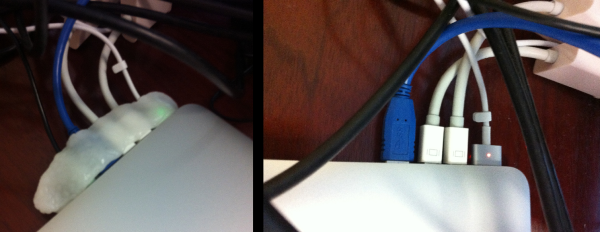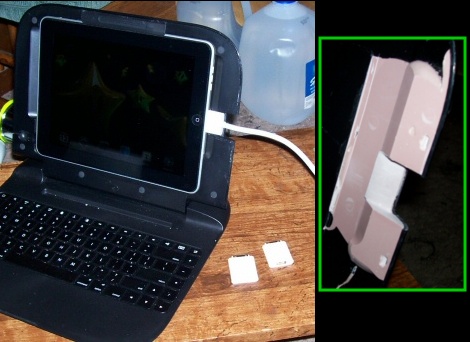If you’ve ever owned a laptop with a docking station you can certainly attest to how something so simple can make your life easier. Just pop in the laptop and your external monitor(s), mouse, keyboard, and whatever are all ready to go. When it’s time to leave, just pop the laptop out and be on your way. [Chris] uses a Macbook for work and has to plug and unplug 4 connectors several times a day. This is just plain annoying and even more annoying when he accidentally plugs his two external monitors into the wrong ports. Commercially available docking stations are very expensive so [Chris] scratched his head and came up with a neat DIY docking station alternative.
All of the cords that regularly need connecting and disconnecting are conveniently located next to each other. He took some moldable plastic and surrounded all of his cord connectors while they were plugged into his laptop. Once the plastic hardened, all 4 cables can be plugged/unplugged at once. The plastic holds the connectors at the right orientation and spacing so [Chris’s] monitors will never again be plugged into the wrong ports. This is a great idea and we’d love to see a 3D printed version made for the docking-station-less computer users.
via [LifeHacker]











